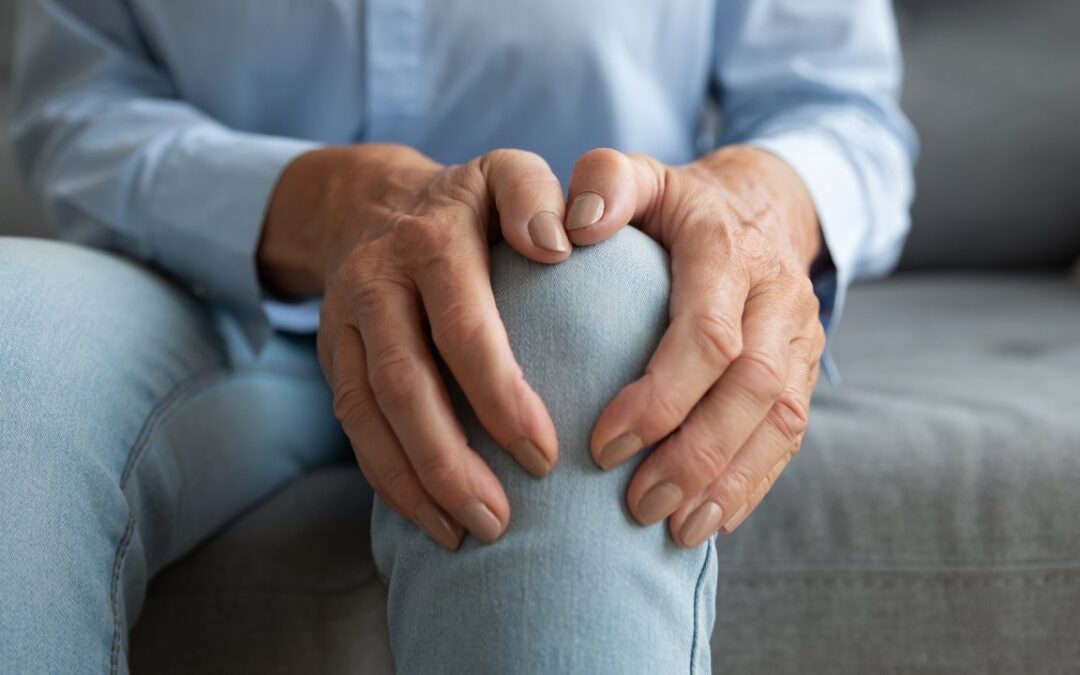Chronic pain is a complex and challenging condition that affects approximately 50 million people in the United States according to research from the CDC. Unlike acute pain, which typically arises from a specific injury or illness and resolves once the underlying cause is treated, chronic pain persists for weeks, months, or even years. It can significantly impact a person’s quality of life, making everyday tasks difficult and reducing overall well-being.
Here at Innova Primary Care we have many patients dealing with chronic pain issues and we understand the complexities associated with treating pain. We seek to treat the whole person mind, body, and soul. We take a multipronged approach to treating our patients with pain because we know no two cases are like.
In this article, we’ll delve deeper into chronic pain, exploring its symptoms, treatment options, and coping strategies.

What is Chronic Pain?
Chronic pain is defined as persistent discomfort that lasts beyond the normal healing time for an injury or illness. It can manifest in various forms, such as dull aches, sharp stabbing sensations, burning, or throbbing pain. Unlike acute pain, which serves as a warning signal to the body, pain often persists long after the initial injury has healed. It can affect any part of the body and may be associated with underlying conditions such as arthritis, fibromyalgia, neuropathy, or past injuries.
Symptoms of Chronic Pain
- Persistent Pain: The primary symptom of chronic pain is ongoing discomfort that lasts for an extended period, typically exceeding three months. This persistent pain can range from mild to severe and may fluctuate in intensity over time.
- Reduced Mobility: Pain can limit mobility and make it challenging to perform everyday activities such as walking, bending, or lifting objects. This limitation in movement can lead to muscle stiffness, weakness, and decreased flexibility.
- Fatigue: Constant pain can disrupt sleep patterns, leading to fatigue and exhaustion, which further exacerbates the perception of pain. Sleep disturbances, such as difficulty falling asleep or staying asleep, are common among individuals with chronic pain.
- Mood Changes: Living with chronic pain can take a toll on mental health, leading to feelings of depression, anxiety, irritability, and frustration. The constant struggle with pain can affect one’s emotional well-being and overall outlook on life.
- Decreased Quality of Life: Pain can impact various aspects of life, including work, relationships, and recreational activities, leading to social isolation and reduced enjoyment of life. Individuals may find themselves withdrawing from social events or hobbies they once enjoyed due to the limitations imposed by their pain.

Treatment Options
While chronic pain can be challenging to manage, several treatment options can help alleviate symptoms and improve quality of life. Here are some common approaches:
- Medications
- Over-the-counter pain relievers: Non-prescription medications such as acetaminophen (Tylenol) or nonsteroidal anti-inflammatory drugs (NSAIDs) like ibuprofen can provide relief for mild to moderate chronic pain.
- Prescription medications: For more severe pain, doctors may prescribe opioid analgesics, muscle relaxants, or antidepressants to help manage symptoms. However, these medications carry risks of dependence and side effects and are usually used cautiously and under close supervision.
- Physical Therapy
- Physical therapy involves exercises, stretches, and manual techniques designed to improve strength, flexibility, and range of motion, reducing pain and improving function. A physical therapist can tailor a treatment plan to address specific areas of weakness or dysfunction.
- Modalities such as heat, cold, ultrasound, and electrical stimulation may also be used to alleviate pain and promote healing.
- Interventional Procedures
- Nerve blocks: Injections of local anesthetics or steroids can temporarily block pain signals from specific nerves, providing relief for conditions such as sciatica or arthritis.
- Spinal cord stimulation: This procedure involves implanting a device that delivers electrical impulses to the spinal cord, disrupting pain signals and reducing discomfort. It’s often used for chronic back or leg pain that hasn’t responded to other treatments.
- Mind-Body Therapies
- Techniques such as mindfulness meditation, yoga, tai chi, and relaxation exercises can help reduce stress, improve coping mechanisms, and decrease the perception of pain. These practices focus on fostering a mind-body connection and promoting relaxation and well-being.
- Cognitive-behavioral therapy (CBT) can also be beneficial in changing negative thought patterns and behaviors associated with chronic pain. By identifying and challenging unhelpful beliefs about pain, individuals can learn to manage their symptoms more effectively.
- Complementary and Alternative Medicine (CAM)
- Practices like acupuncture, massage therapy, chiropractic manipulation, and herbal supplements may provide relief for some individuals with chronic pain, although scientific evidence supporting their efficacy varies. These modalities are often used in conjunction with other treatments as part of a holistic approach to pain management.
- Lifestyle Modifications
- Healthy lifestyle habits such as regular exercise, maintaining a balanced diet, getting adequate sleep, and managing stress can play a crucial role in managing pain and promoting overall well-being. Exercise, in particular, can help strengthen muscles, improve flexibility, and release endorphins, the body’s natural painkillers.
Coping Strategies for Chronic Pain
In addition to medical treatments, coping strategies can empower individuals to better manage their pain and improve their quality of life. Here are some tips for coping with chronic pain:
- Education: Understanding the nature of pain and learning about available treatment options can empower individuals to take an active role in their care and make informed decisions about their health.
- Pacing Activities: Breaking tasks into manageable segments and pacing oneself throughout the day can help conserve energy and prevent exacerbation of pain symptoms.
- Stress Management: Practicing relaxation techniques such as deep breathing, progressive muscle relaxation, or guided imagery can help reduce stress and alleviate muscle tension, which can worsen pain.
- Social Support: Connecting with friends, family members, support groups, or online communities can provide emotional support, encouragement, and practical tips for coping with chronic pain.
- Setting Realistic Goals: Setting achievable goals and celebrating small victories can boost morale and motivation, even in the face of chronic pain.
- Seeking Professional Help: Consulting with a mental health professional, such as a therapist or counselor, can provide additional support and coping strategies for managing the emotional impact of chronic pain.
Conclusion
Pain is a complex and challenging condition that requires a comprehensive approach to management. By addressing physical, emotional, and lifestyle factors, individuals with chronic pain can find relief and improve their quality of life. It’s essential to work closely you’re your healthcare team at Innova Primary Care to develop a personalized treatment plan tailored to individual needs and circumstances. With perseverance, patience, and support, it’s possible to regain control over one’s life and thrive despite living with chronic pain.



 About
About

 About
About About
About About
About
 About
About About
About

 About
About About
About About
About About
About











